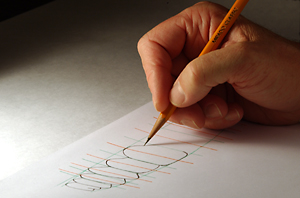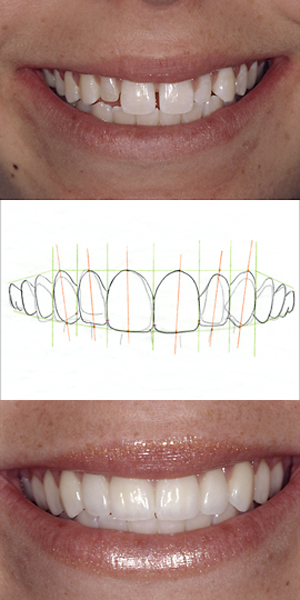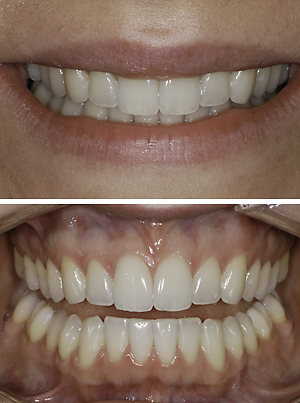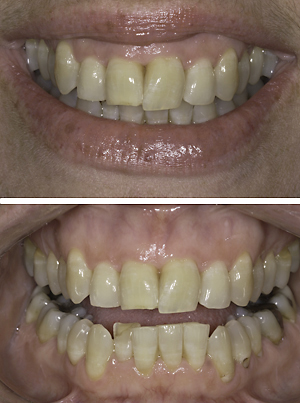Smile Design (Part 3)
“What is smile design? How can it help me?”
In a previous post “Smile Design (Part 1)”, I presented the concept of “Smile Design”, and in the last post “Smile Design (Part 2)” I illustrated a few examples of some of the principles I always evaluate in assessing a smile and considering enhancements that can be made.
“Necessity: the Mother of Invention”
Studying cosmetic dental principles over two decades ago was somewhat frustrating. I found that most lectures, articles, and presentations described recognition and diagnosis (similar to “Smile Design (Part 2)”—not design. Knowing a list of principles is one thing. Developing a plan that keeps them all simultaneously balanced in harmony is quite another.
In 1995, I developed a planning technique to solve this problem. By drawing on  superimposed pieces of tracing paper, the existing dental appearance could be compared to an ideal arrangement to determine not only what alterations are required but also what procedures would be needed to create it. Just as an architect’s blueprint design is crucial to envision and then create a building, the Smile Design drawing technique is indispensable to plan and then create an exquisite smile.
superimposed pieces of tracing paper, the existing dental appearance could be compared to an ideal arrangement to determine not only what alterations are required but also what procedures would be needed to create it. Just as an architect’s blueprint design is crucial to envision and then create a building, the Smile Design drawing technique is indispensable to plan and then create an exquisite smile.
Let me show you how it works…
A Blueprint for Success
A series of initial photographs are captured to show the current arrangement and  appearance of the smile. (See the top image to the right.)
appearance of the smile. (See the top image to the right.)
The existing tooth contours are outlined on the one piece of tracing paper. (See the light gray lines in the middle image to the right.) A second overlying piece of tracing paper is used to create a framework that would establish Smile Design principles proportionally appropriate for that particular patient. (See the green, orange, and purple guidelines in the middle image as well.) A final piece of tracing paper on top is used to design a proposed smile enhancement. (See the dark gray lines in the middle design image to the right.)
Here are the two keys: First, by creating a smile blueprint that “fits” the underlying precision framework, the final result will follow all the necessary principles to create a truly beautiful smile. Second, by comparing the starting contour (light gray) with the desired result (dark gray), a dentist can recommend the best procedures to predictably achieve the results. (See the actual final treatment cosmetic dentistry results for this patient’s smile makeover in the bottom photograph to the right.)
It has been a privilege and honor to teach dentists all across America how to perform this technique for the last 17 years.
To see additional smile design results achieved on actual patients at Snow Dental Care, be sure to check out the beautiful smiles in our Smile Showcase .
Copyright © 2013 Stephen R. Snow, DDS



